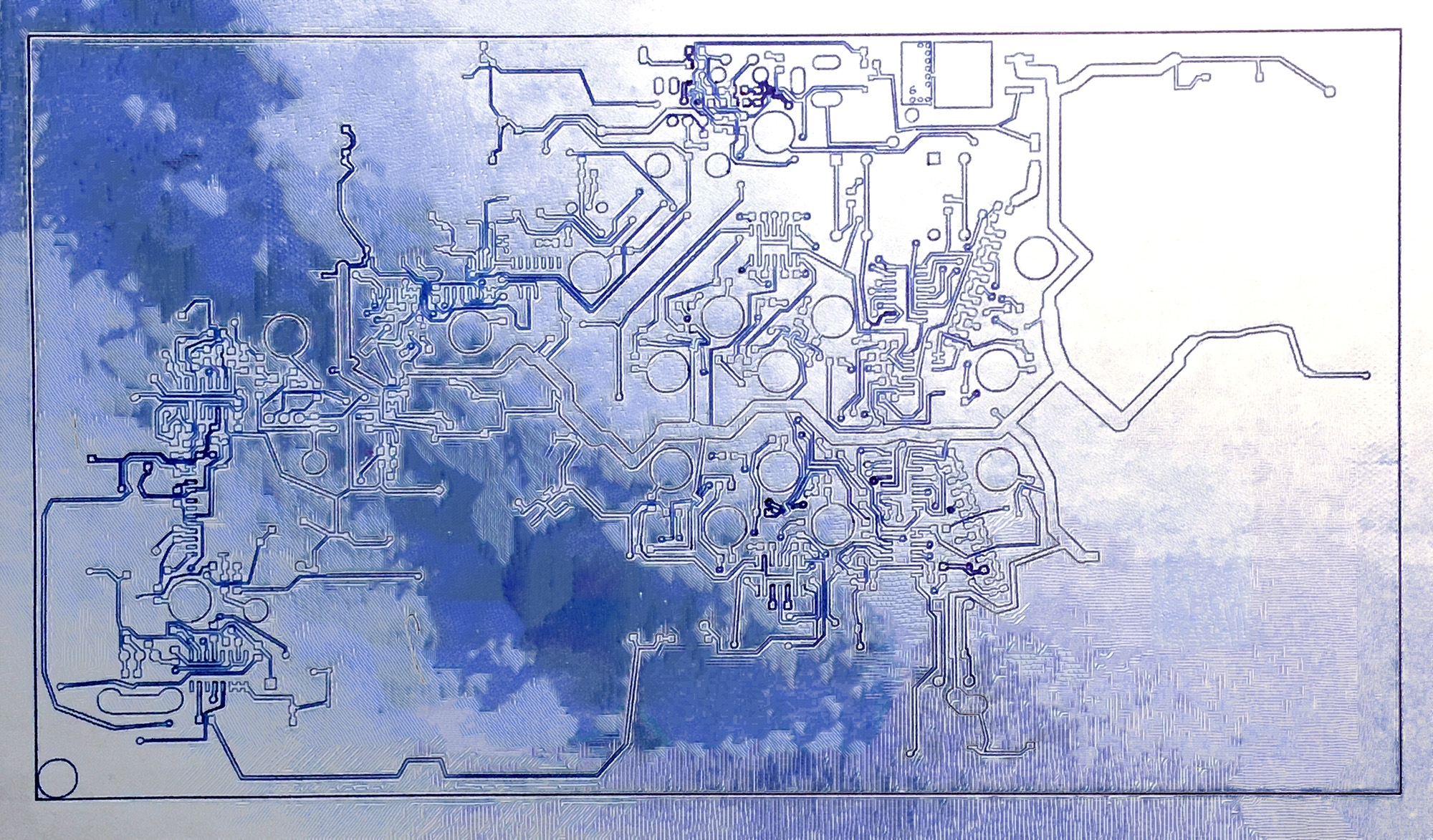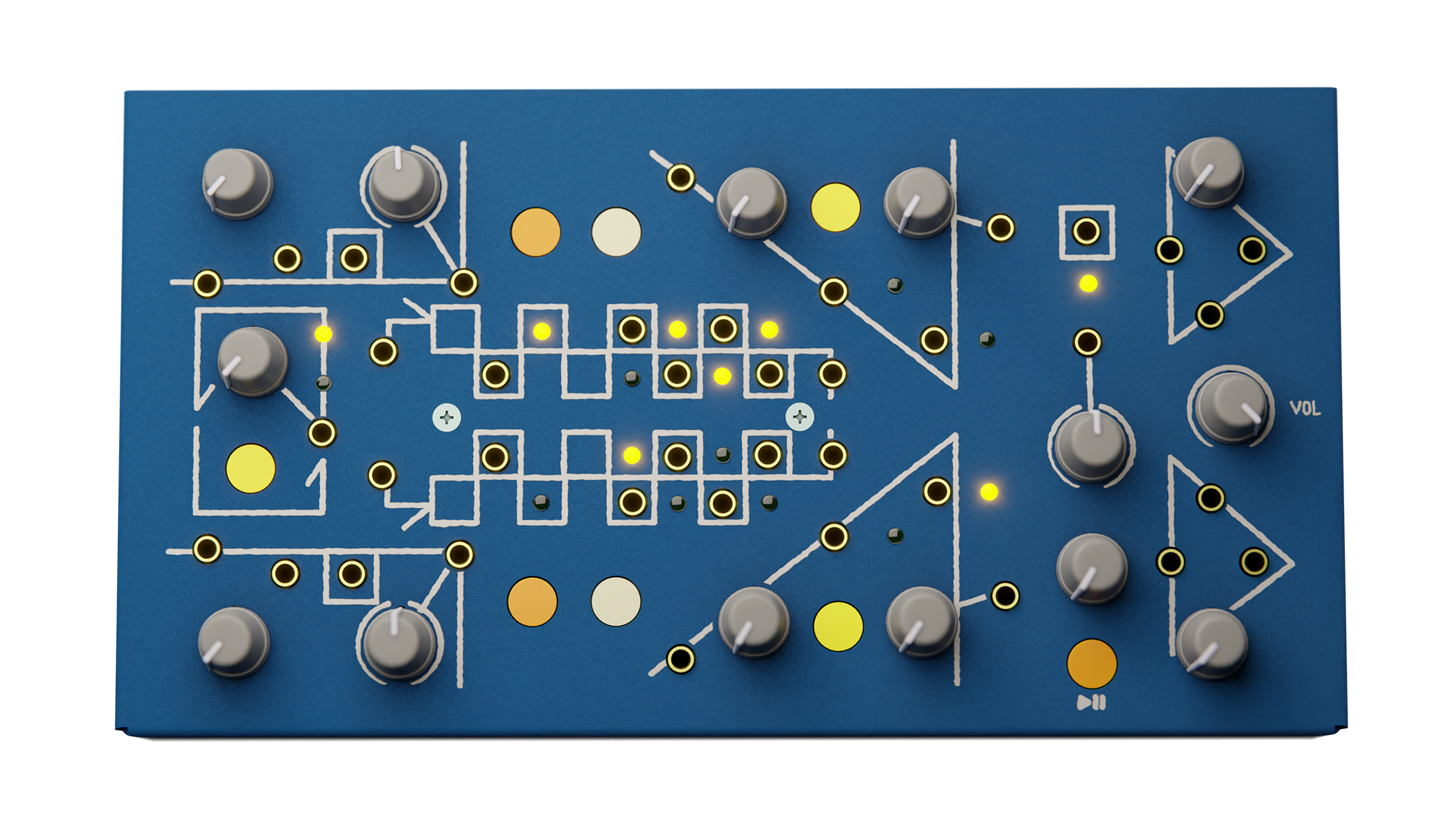Blog
Apr 29, 2024
Ok, coming back around to clear the cobwebs out of this dusty old blog once again. I haven’t been good about keeping up with this, and I hope for that to change…
My new aim for this blog is to be posting circuits that will work well on a single 9v power supply. Great for DIY of course! Noise circuits to create noise projects with. With a CC BY-NC-SA License. Non-commercial use only. I plan to sell PCBs of some designs in the future, but for now will just try to consistently post schematics for all you brave electronics DIYers out there.
These designs will use jellybean parts, the E6 series of preferred numbers for resistors and capacitors, simple as possible.
First up! Cycling24
This design is another riff on the same basic idea Ive been orbiting for years. Cycling shift registers... In this case a 24 bit shift register. This can be used as an LFO or tone source oscillator. Try sending something into the data input.
Falstad simulation to test resistor combinations
Also included in the falstad is the idea to use a square wave osillator at the data input to get some interference pattern propigation.
Beginning with the Data input jack on the upper left hand corner of the page is a comparator which compares the signal on the non-inverting input with 4.5v made by the resistor divider (R8,R9). Change this if you like to have the comparator point somewhere else. Below the comparator is an LED driver around Q1. The output of the comparator goes into the CD4046 Phase locked loop chip. Pins 3,14 and 2 interface with an XOR gate on the chip. This XOR gate is called “Phase Comp I” in the CD4046 datasheet. Pin 3 of the CD4046 is the data loop from the end of the register. Output of the XOR gate feeds the data input to the shift register chain (U3,U4,U5).
Q2 and Q3 make a differential amp used to sink current from the CD4046, changing the pitch of the internal oscillator. Note the potentometer on the left side of the diff amp is clockwise to gnd as that side is inverting.
SW1 and associated components make a short positive going pulse by high-passing the edge of the switch press and clipping any negative swing with the diode. This is mixed with the Clear input banana jack.
The long chain of resistors is a mixer mixing all of the bit outputs from the shift register chain. I’ve linked the circuit in Falstad’s excellent interactive analog circuit simulator. There you can test different resistor values for the mixer. The values used in this design are the E6 values starting at 470k going down to 6.8k and then back up the series. This gives a clipped-sine type mixture a la the digital sine wave generator from the CMOS cookbook.
This design can doubly function as a type of sequencer. You could add a way to loop the register at different lengths like a rotary switch or patch points. And also add jacks to the outputs of the registers which you might want to loop from or use as gate signals.
The PDF features art by Fiona from I think 2017. I hope its ok I’m using your art as part of this, Fiona. The images were made as repeating background-image tiles for a website.
The component values in the schematic and materials list use this convention: 103 = 10 + 000 = 10k. 474 = 47 + 0000 = 470k.
If you come across something that is almost certainly a bug, please let me know via my contact form. I will try to answer build questions and troubleshooting messages but I can’t promise to be super quick to respond.
Bill of Materials Revision 0
| Designators | Value | Qty | Link |
|---|---|---|---|
| BT1, BT2, BT3, BT4, BT5 | Banana Jack | 5 | Link |
| C1, C3 | 103 | 2 | Link |
| C2 | 102 | 1 | Link |
| C4, C5 | 104 | 2 | Link |
| D1 | LED | 1 | Link |
| D3 | 1n4148 | 1 | Link |
| Q1, Q2, Q3 | 2N3904 | 3 | Link |
| R1, R4, R8, R9, R25, R30, R31, R34, R44, R45, R47, R48 | 103 | 12 | Link |
| R2, R7, R17, R18, R26, R39, R49, R51 | 104 | 8 | Link |
| R3, R19, R21, R36, R50 | 473 | 5 | Link |
| R5, R6, R10, R13, R15, R37, R46, R52 | 102 | 8 | Link |
| R11, R43 | 474 | 2 | Link |
| R12, R42 | 334 | 2 | Link |
| R14, R28, R41 | 224 | 3 | Link |
| R16, R40 | 154 | 2 | Link |
| R20, R38 | 683 | 2 | Link |
| R22, R35 | 333 | 2 | Link |
| R23, R33 | 223 | 2 | Link |
| R24, R32 | 153 | 2 | Link |
| R27, R29 | 682 | 2 | Link |
| RV1 | 100K Linear Pot | 1 | Link |
| SW1 | SPST Pushbutton | 1 | Link |
| U1 | TL064 | 1 | Link |
| U2 | CD4046 | 1 | Link |
| U3, U4, U5 | CD4015 | 3 | Link |
Jun 2, 2022
Site style changes. I have replaced the gradients with solid colors. No more gradients, my GF says its too soon try and bring those back, just tacky. I see what she means. Also so big a style jump from my previous site style, not cool. I get it. Some general styling issues with padding and spacing things are also now better.
Double Knot v3 cases are in PA undergoing silk-screening. Circuit boards and most of the parts are here getting ready for pick-and-placing. A few little part hiccups but they should be in the machines populating soon! Finishing up the user manual and will be burning a silkscreen to print boxes soon. Here is a pen plot of some traces from the circuit board artwork "cultured" in Photoshop.

May 12, 2022
Hello from my new website! It's restyled for the 20s with some gradients and a new logo... Sorry if you checked the site between 1PM and 3PM EST on 05/13/22. I was having an issue with Jekyll that turned out to be caused by the fact that I was using keywords for my layouts "Page", "Post"and "Home". Don't use these words, they apparently break Jekyll...
Check out this beautiful render depicting the new Double Knot v3 by Max ! There's more where that came from, too. Happy to say that the Double Knot circuit boards are now being assembled here in Maryland and the new aluminum cases are manufactured nearby in Pennsylvania. Pre-orders available in my web store while supplies last.
